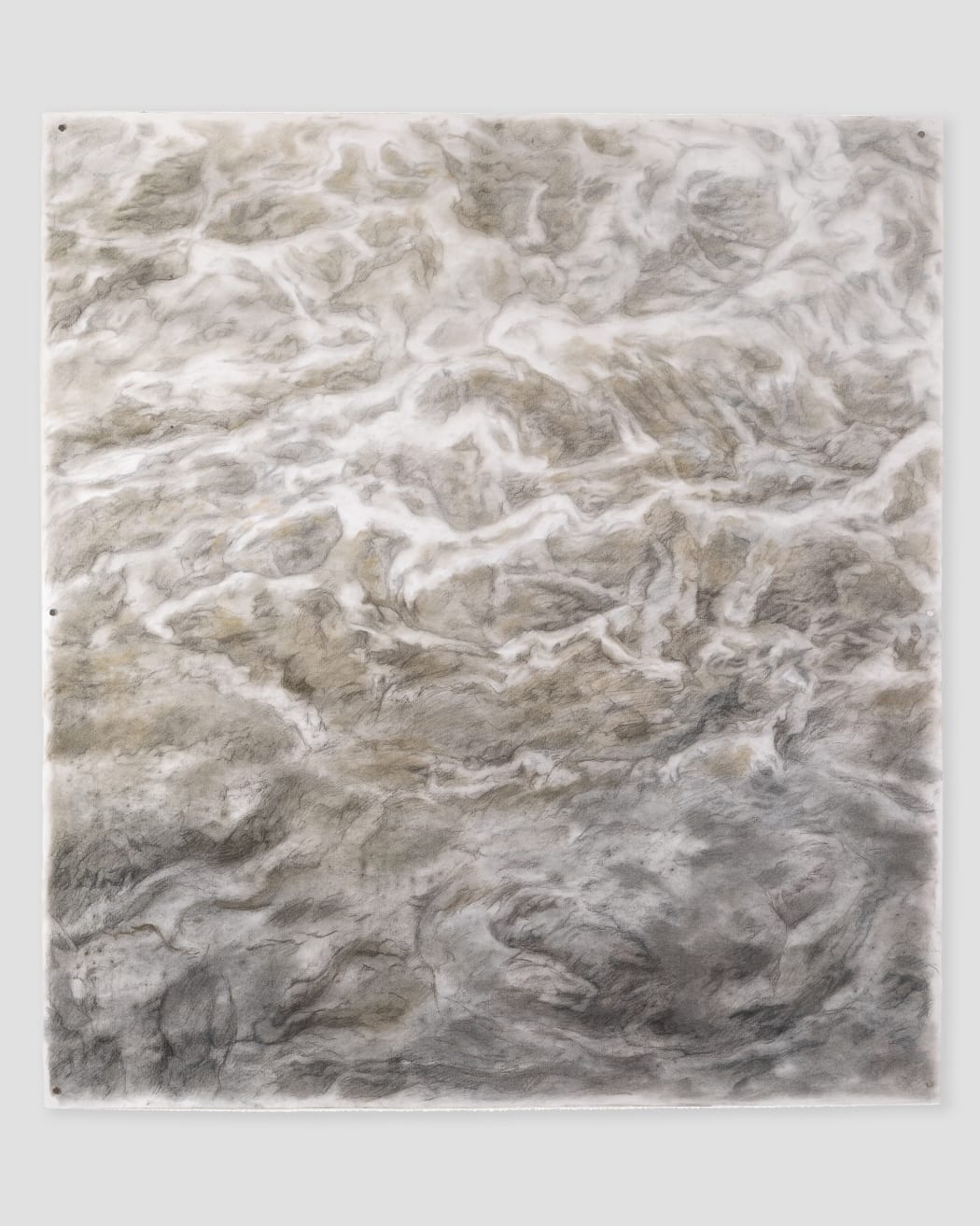
Terra Madre: Katrina Bello
Charcoal—in use for human visual expression since 26,000 BCE—is Philippine-born artist Katrina Bello’s preferred medium for transcribing her response to landscapes she immerses herself in. Exploring the terrain in art residencies in different parts of the U.S. is Bello’s way of finding elemental connections to her adopted country. The haptic—the sense of touch—is ever-present in her process and production. From the earth, dirt, or rocks that she collects or crushes to the charcoal and pastel that she smudges onto paper to create the skeins of lines and the shades of crevices in the tree bark or stone striations that she draws, her hand serves as the medium through which she meditates on what it means to embrace what feels like terra incognita.

KATRINA BELLO | Terra Niobrara, 2023. Charcoal and pastel on paper, 59 x 96 1/2 in (149.9 x 245.1 cm).
Attracted to “the raw, unfiltered, unpolished surfaces of the Earth,” she creates panoramic swaths of patterns that would feel gossamer if not for the weight of time palpable in the organic matter that she draws. She states, “I am drawn to the most dramatic surfaces that are found in the patterns in tree bark, rock strata, mountains, and water because they resemble scars and folds in the patterns of human skin.” She cites the Finnish architect Juhani Pallasmaa, who wrote:
Touch is the sensory mode that integrates our experience of the world with that of ourselves. Even visual perceptions are fused and integrated into the haptic continuum of the self; my body remembers who I am and where I am located in the world. My body is truly the navel of my world, not in the sense of the viewing point of the central perspective, but as the very locus of reference, memory, imagination and integration.
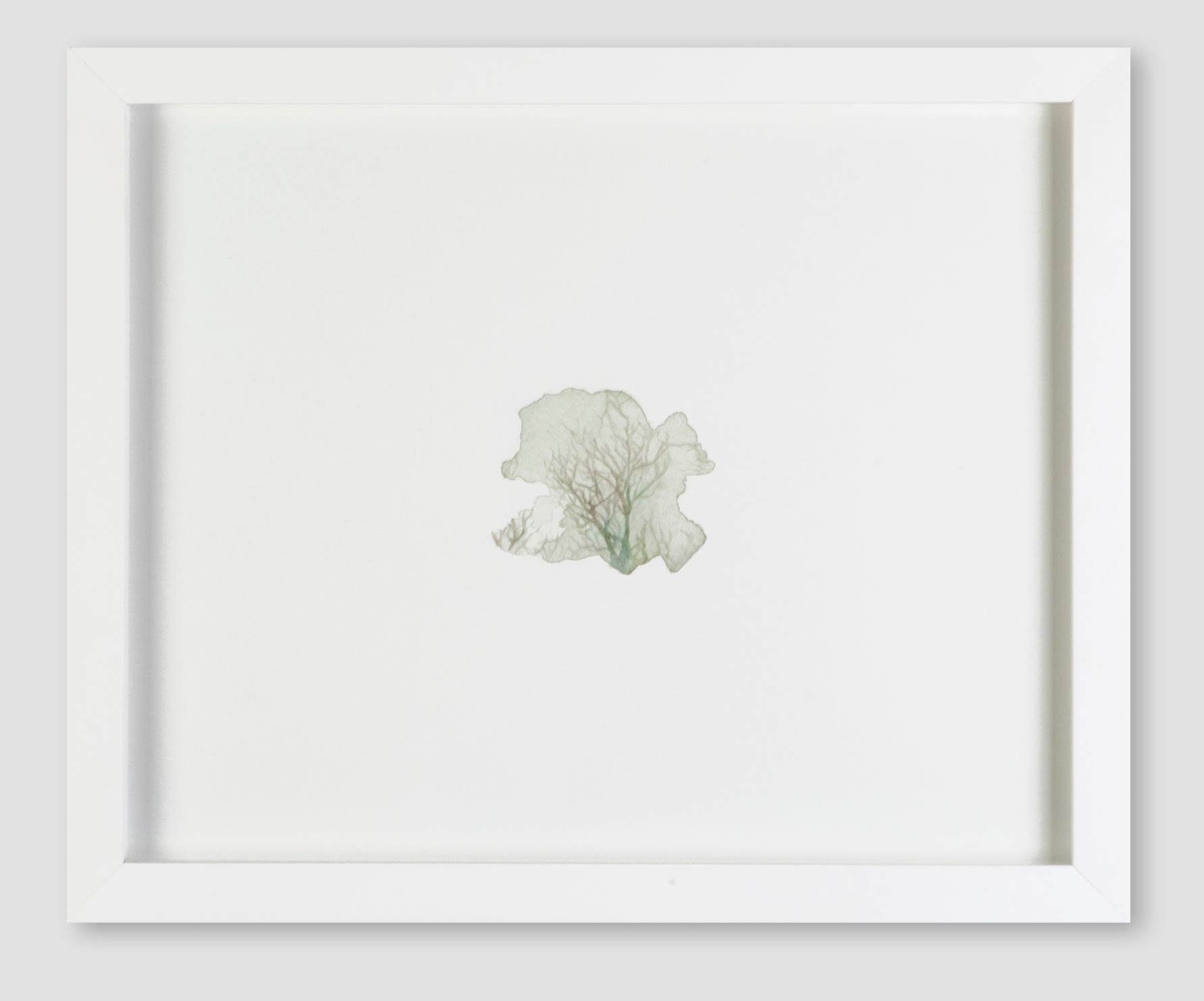
The navel is evidence of how the human continuum is created—with the button-size depression in the human body marking the severed attachment to the umbilical cord through which new human life is nurtured. Drawing analogies between mother Earth and motherhood and acknowledging the task of holding in one’s hands the earth on which one stands to find connection with it, each band in Bello’s Lupain video shows the cupped hands of each of her three daughters holding rippling water, alluding to waters traversed from one place to another and to shores that are points of departure or arrival.
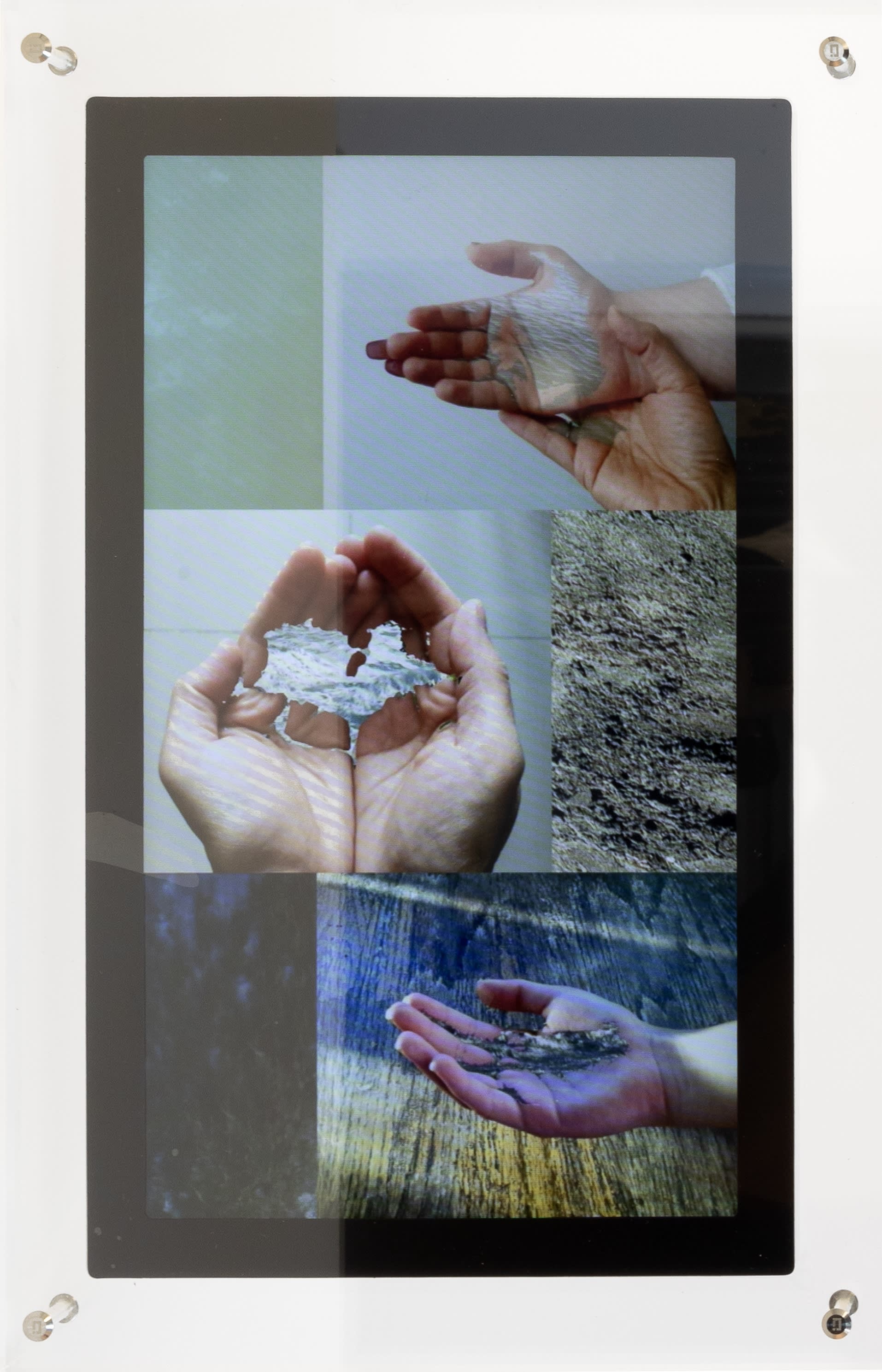
KATRINA BELLO | Lupain Series (Sophia, Kai, Kamilla), 2025. Looping single-channel silent video embedded in media player, 11 1/2 x 7 in (29.2 x 17.8 cm).
The centerpiece of Terra Madre comprises three drawings, Lupain (Ulmus Pumila), Lupain (Posoge) and Lupain (Posoge 1), that Bello created during her 2023 residency at the Helene Wurlitzer Foundation in Taos. Lupain (Ulmus Pumila) is of Siberian Elm bark she photographed in northern New Mexico. Not indigenous to the area and viewed as a hostile interloper, the species transplanted from the Gobi Desert is appreciated in some camps for its capacity to thrive even in places where water is scarce and to serve as a natural shelter where the desert sun is severe. As someone who moved to the U.S. as an adult, she found in the tree a powerful metaphor for “how it takes some time for immigrating people to find their place in their adopted lands, eventually thriving, eventually able to nurture others, turning from being refugees into sources of refuge themselves.”

KATRINA BELLO | Lupain (Ulmus Pumila), 2023. Charcoal and pastel on paper, 54 x 48 in (137.2 x 121.9 cm).
Lupain (Posoge) and Lupain (Posoge 1) are drawn from photos she took of the Rio Grande (P’osoge, “Big River” in Tewa; Paslápaane, “Our Mother of the Green Waters” in Tiwa among the Pueblo people). Bello marvels at how these waters originating from the snowmelt of the Rocky Mountains run “through this massive gorge created by tectonic and volcanic activity [from] millions of years ago;” and on its epoch-crossing journey, becomes “subject to years of political and social disputes regarding allocation.” The waters reaching the border between Texas and Mexico serve as the threshold for “hope and refuge” for those able to cross but also the locus of despair and humiliation for those who are turned away in the ongoing geopolitical crisis of migration. The river gives life but in cleaving land, what is otherwise a waterway—a path—becomes a wall that is viewed as rampart against unwanted incursion or as obstacle that the will to escape all manner of violence is worth risking life and limb to breach.
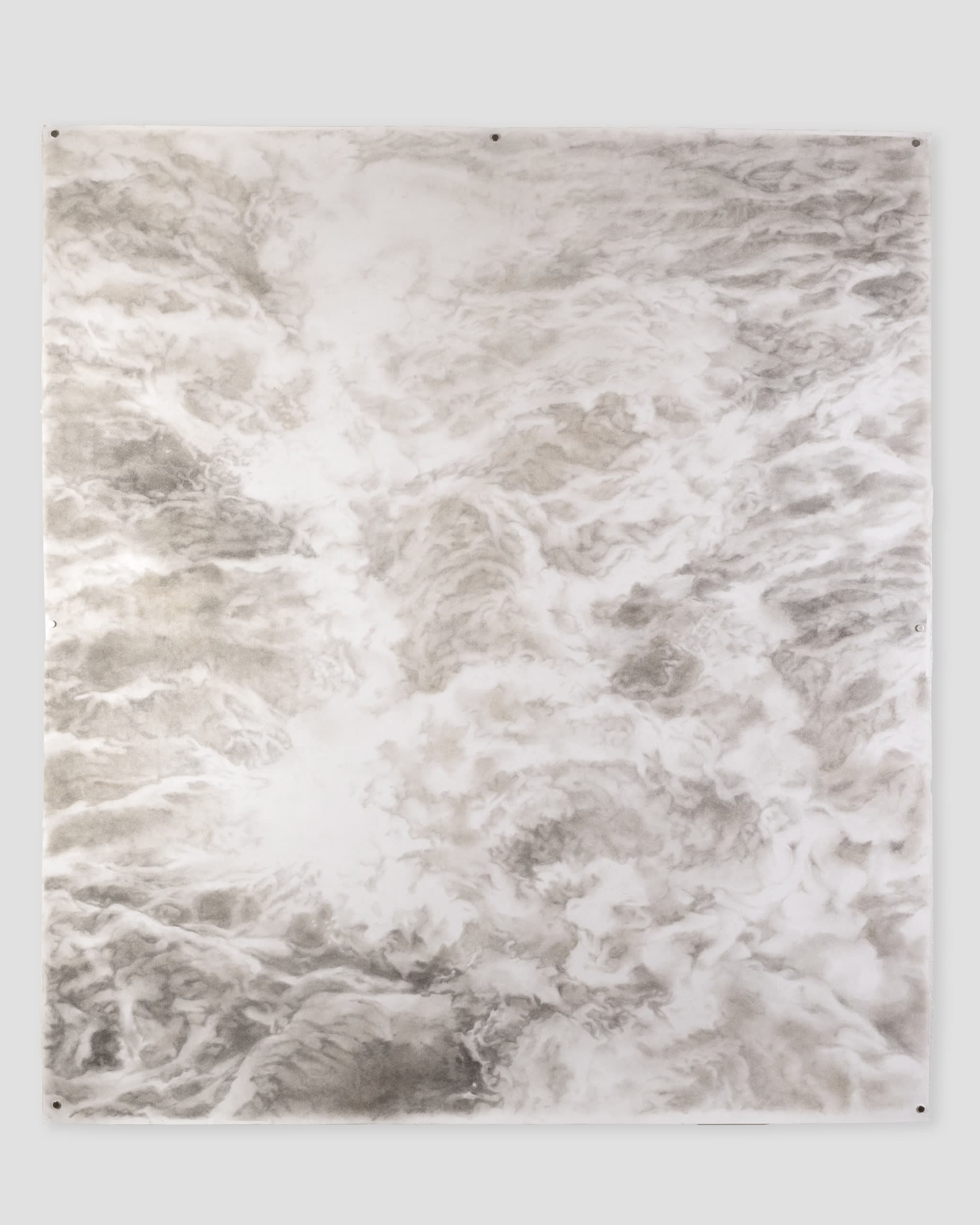
Bello notes that the Rio Grande waters possibly reach “as far as the thin layer of underwater clay off the Yucatan Peninsula” with “the clay a remnant of a mass extinction caused by an asteroid impact 66 million years ago, changing the history of life on Earth.” Life on Earth—that which humans shape or misshape from what stars have birthed; that which humans survive and cultivate—is what Bello pays homage to in charcoal, marking the epic span of time with charred twigs of willow or vine while also holding time intimately in the palm of her hand.
—Carina Evangelista
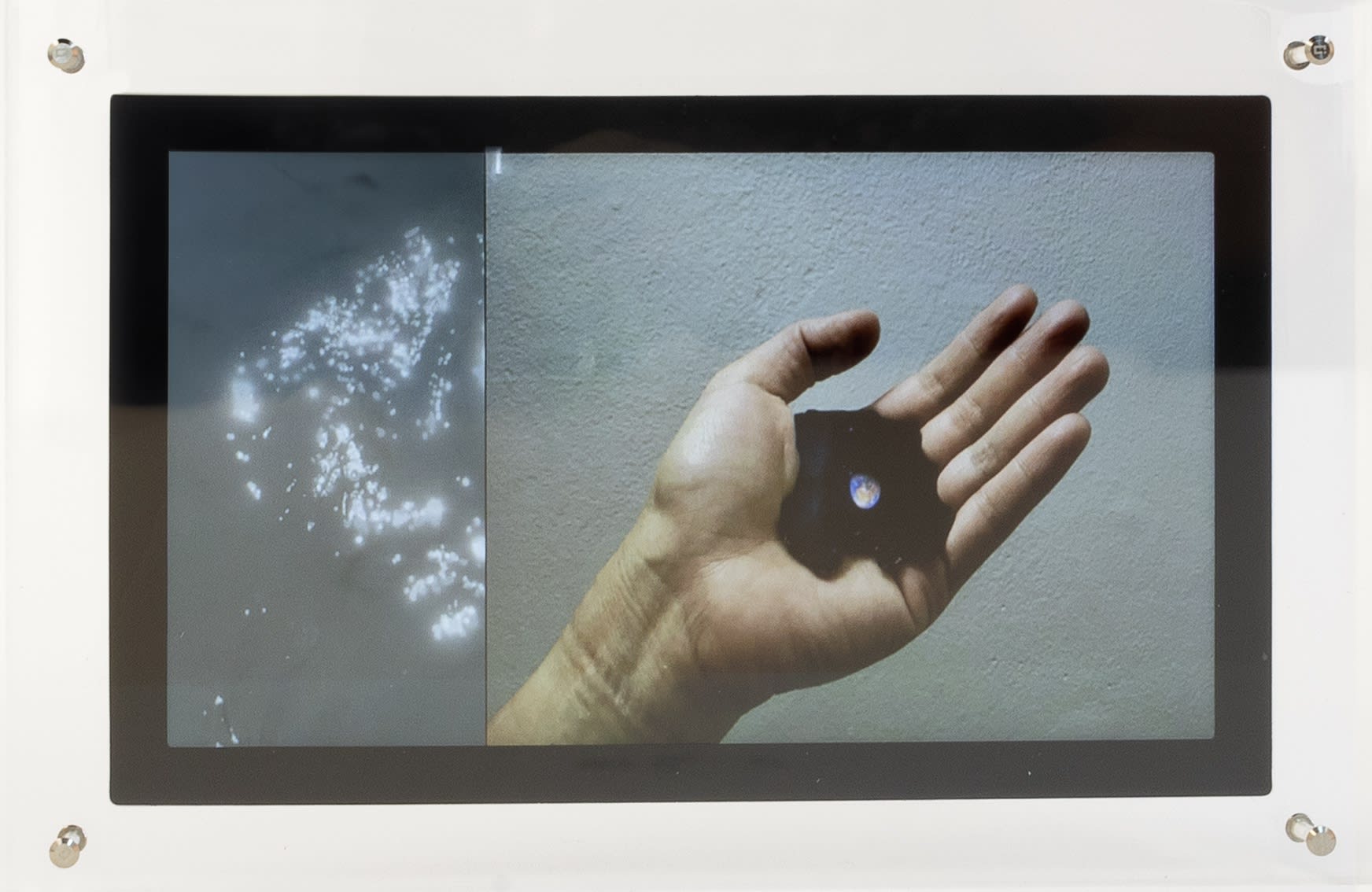
KATRINA BELLO | Hold Your Earth, 2025. Looping single-channel silent video embedded in media player, 7 1/2 x 11 in (19.1 x 27.9 cm).

KATRINA BELLO | Color (7,400 miles), 2025. Ink drawing on clay, yellow ochre, and black sand; ceramic tray by Kamilla Bello, 7 3/4 x 7 1/4 x 1 3/4 in (19.7 x 18.4 x 4.4 cm).
SEE ALL WORKS
Photos by Molly Wagoner, courtesy of Zane Bennett Contemporary Art
